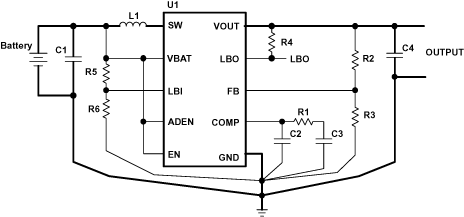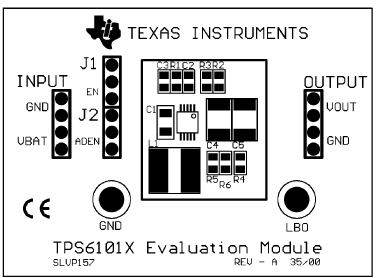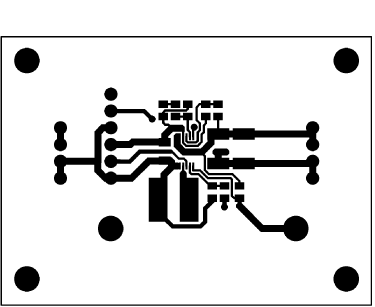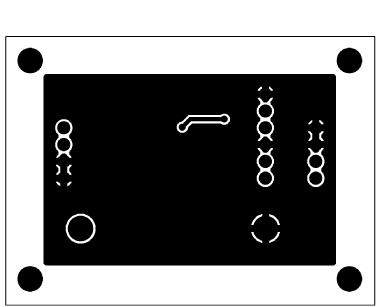SLVS314F SEPTEMBER 2000 – August 2015 TPS61010 , TPS61012 , TPS61013 , TPS61014 , TPS61015 , TPS61016
PRODUCTION DATA.
- 1 Features
- 2 Applications
- 3 Description
- 4 Revision History
- 5 Device Comparison Table
- 6 Pin Configuration and Functions
- 7 Specifications
- 8 Parameter Measurement Information
- 9 Detailed Description
-
10Application and Implementation
- 10.1 Application Information
- 10.2
Typical Applications
- 10.2.1 1.8-mm Maximum Height Power Supply With Single Battery Cell Input Using Low Profile Components
- 10.2.2 250-mA Power Supply With Two Battery Cell Input
- 10.2.3 Dual Output Voltage Power Supply for DSPs
- 10.2.4 Power Supply With Auxiliary Positive Output Voltage
- 10.2.5 Power Supply With Auxiliary Negative Output Voltage
- 10.2.6 TPS6101x EVM Circuit Diagram
- 11Power Supply Recommendations
- 12Layout
- 13Device and Documentation Support
- 14Mechanical, Packaging, and Orderable Information
12 Layout
12.1 Layout Guidelines
As for all switching power supplies, the layout is an important step in the design, especially at high peak currents and high switching frequencies. If the layout is not carefully done, the regulator could show stability problems as well as EMI problems.
Therefore, use wide and short traces for the main current path as indicated in bold in Figure 32. The input capacitor, output capacitor, and the inductor should be placed as close as possible to the IC. Use a common ground node as shown in Figure 32 to minimize the effects of ground noise. The compensation circuit and the feedback divider should be placed as close as possible to the IC. To layout the control ground, it is recommended to use short traces as well, separated from the power ground traces. Connect both grounds close to the ground pin of the IC as indicated in the layout diagram in Figure 32. This avoids ground shift problems, which can occur due to superimposition of power ground current and control ground current.
12.2 Layout Example
 Figure 32. Layout Diagram
Figure 32. Layout Diagram
 Figure 33. TPS6101x EVM Component Placement (Actual Size: 55.9 mm x 40.6 mm)
Figure 33. TPS6101x EVM Component Placement (Actual Size: 55.9 mm x 40.6 mm)
 Figure 34. TPS6101x EVM Top Layer Layout (Actual Size: 55.9 mm x 40.6 mm)
Figure 34. TPS6101x EVM Top Layer Layout (Actual Size: 55.9 mm x 40.6 mm)
 Figure 35. TPS6101x EVM Bottom Layer Layout (Actual Size: 55.9 mm x 40.6 mm)
Figure 35. TPS6101x EVM Bottom Layer Layout (Actual Size: 55.9 mm x 40.6 mm)
12.3 Thermal Considerations
Implementation of integrated circuits in low-profile and fine-pitch surface-mount packages typically requires special attention to power dissipation. Many system-dependent issues such as thermal coupling, airflow, added heat sinks and convection surfaces, and the presence of other heat-generating components affect the power-dissipation limits of a given component.
Three basic approaches for enhancing thermal performance are:
- Improving the power dissipation capability of the PWB design
- Improving the thermal coupling of the component to the PWB
- Introducing airflow in the system
The maximum junction temperature (TJ) of the TPS6101x devices is 125°C. The thermal resistance of the 10-pin MSOP package (DGS) is RθJA = 161.8°C/W. Specified regulator operation is assured to a maximum ambient temperature (TA) of 85°C. Therefore, the maximum power dissipation is about 247 mW. More power can be dissipated if the maximum ambient temperature of the application is lower.
